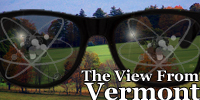Japan launches nuclear safety agency
Restart of the nation's nuclear reactors will be guided by its actions

Restart of the nation's nuclear reactors will be guided by its actions
On September 11, the National Nuclear Security Administration (U.S. Department of Energy) hosted a public meeting in Chattanooga, Tenn., concerning its Supplemental Environmental Impact Statement on the disposition of surplus weapons-grade plutonium as mixed-oxide (MOX) fuel for use in power reactors. You may have seen the ANS Call to Action for the hearing and perhaps read the ANS position statement or background information.
Implementation of the energy policy announced last week will keep reactors running well into the second half of the 21st century.
 The weekly Carnival is the collective voice of blogs by many of the Internet's foremost nuclear experts and advocates, who continue each week to tell the story of nuclear energy around the World Wide Web.
The weekly Carnival is the collective voice of blogs by many of the Internet's foremost nuclear experts and advocates, who continue each week to tell the story of nuclear energy around the World Wide Web.
 When the heat released by nuclear fission is used in a steam plant to produce mechanical power, the second law of thermodynamics dictates that a large part of the heat must be rejected to the environment. Most land-based nuclear plants reject heat by using cooling water from a river or ocean.
When the heat released by nuclear fission is used in a steam plant to produce mechanical power, the second law of thermodynamics dictates that a large part of the heat must be rejected to the environment. Most land-based nuclear plants reject heat by using cooling water from a river or ocean.
When I was registering for the various events scheduled to take place during the ANS Annual Meeting this past June, I was quite excited to see that one of the three technical tours would be at Exelon's Dresden Nuclear Station, not too far from downtown Chicago where the meeting was taking place. Luckily, I made the cut for attendance and was issued a ticket for the tour when I checked in at the meeting desk.
The nuclear-powered roving robotic laboratory Curiosity touched down early on August 6, and is beaming back images while undergoing system checks. The Curiosity landing has generated worldwide interest, including interest in its plutonium power source.
This article is the first in a series of info-graphic presentations about nuclear energy. This graphic compares the energy density of nuclear to that of wind power.
 The hard-copy May issue of Nuclear News will soon be in the hands of American Nuclear Society members. It will also be available electronically to members.
The hard-copy May issue of Nuclear News will soon be in the hands of American Nuclear Society members. It will also be available electronically to members.
The views expressed in this article are the author's, and do not represent the editorial position of Nuclear News magazine or the policy of the American Nuclear Society.